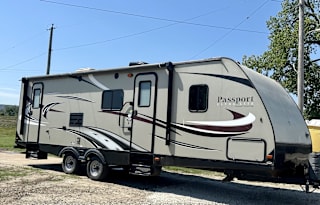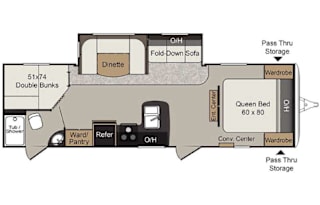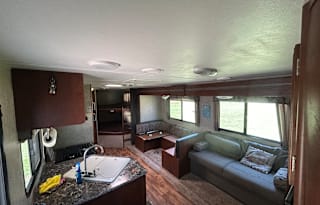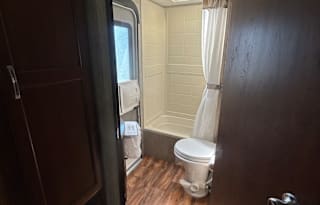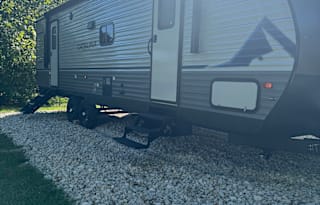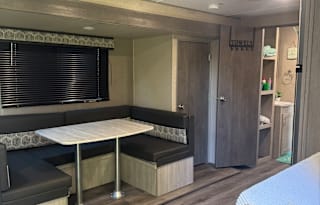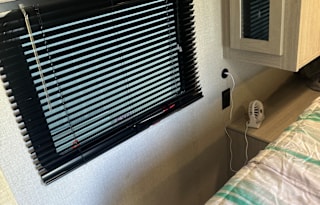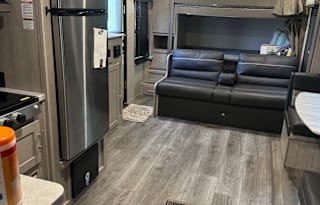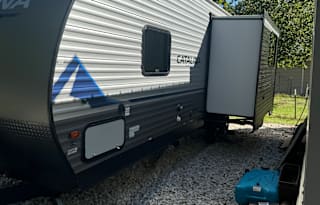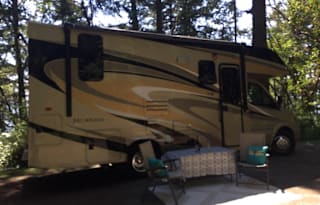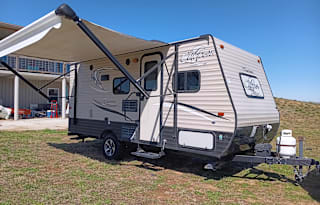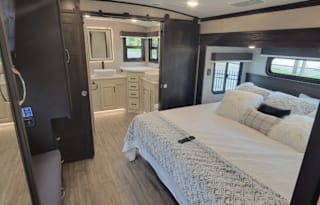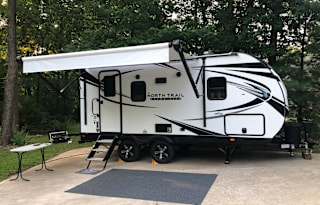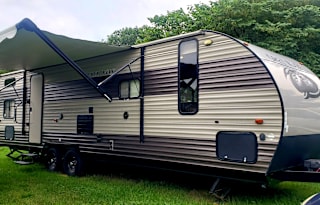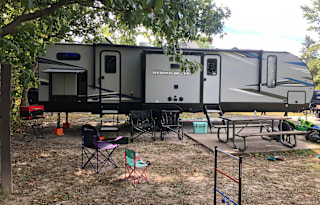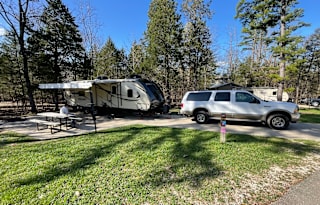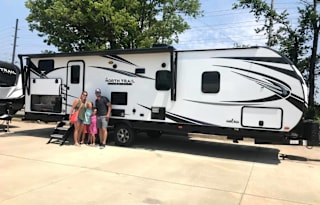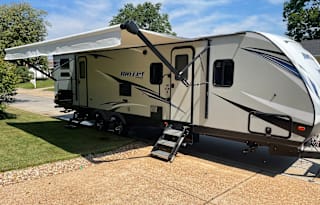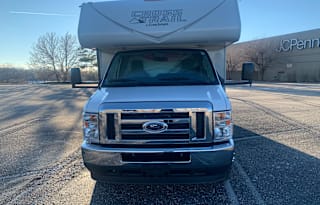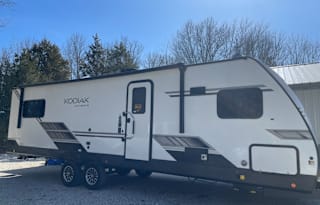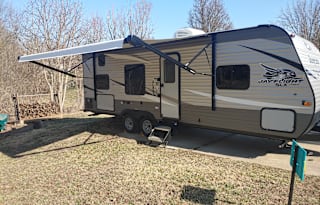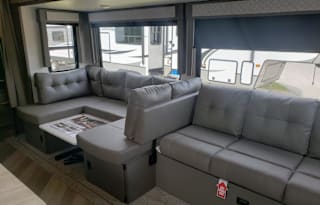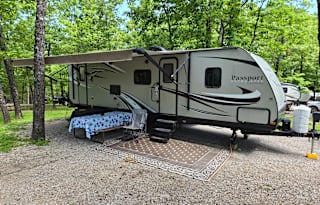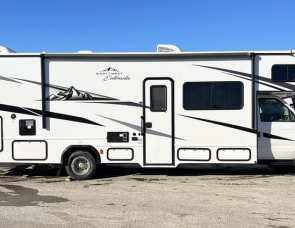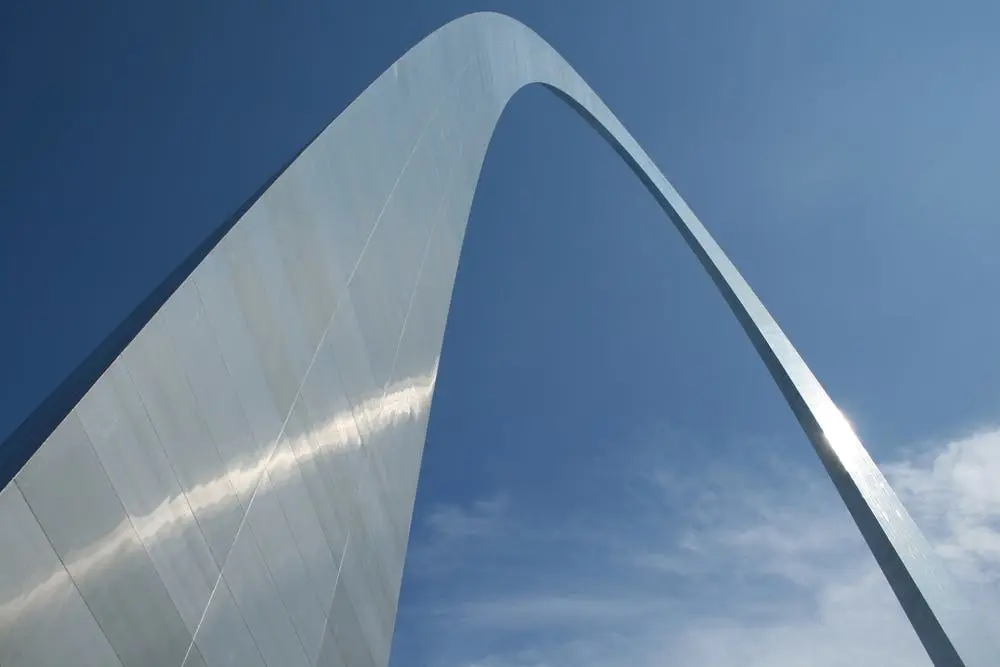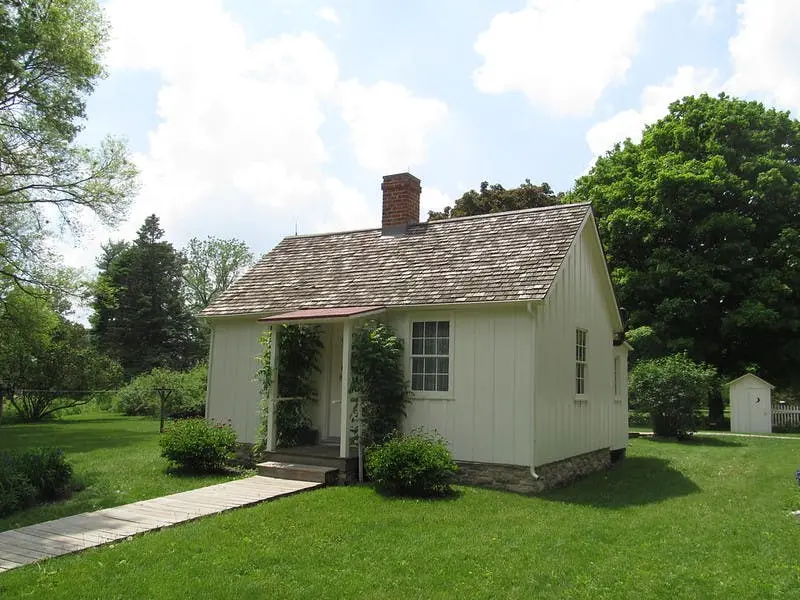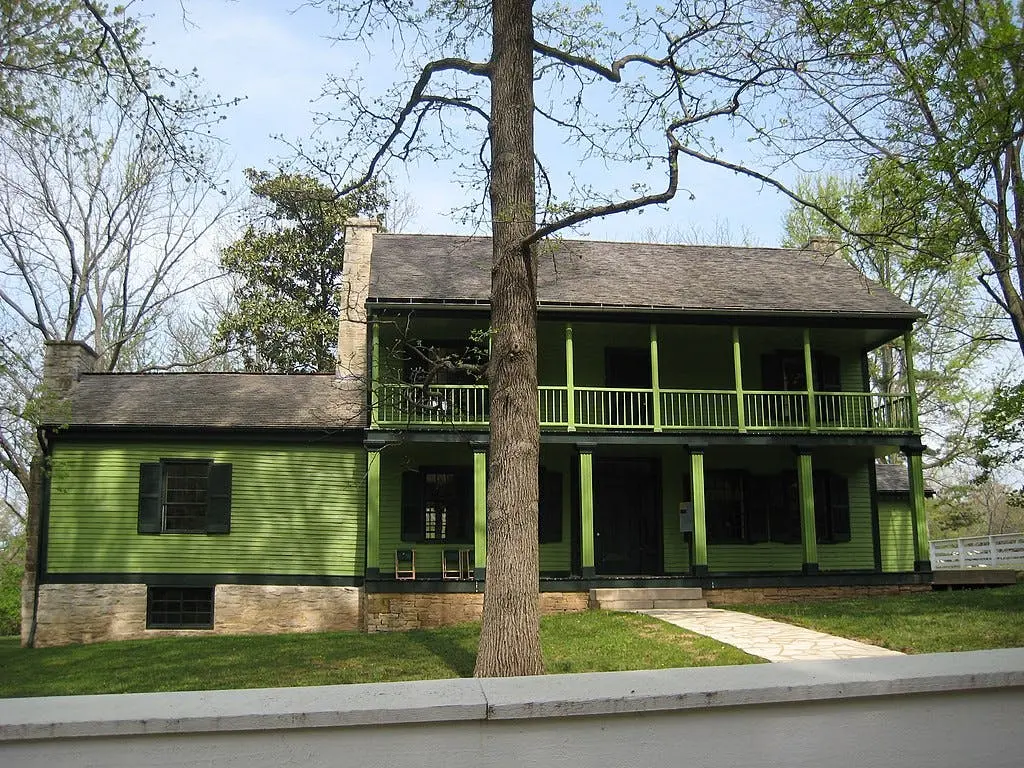RV Rental Quincy, IL
RV Rentals Near Quincy, IL
Pet Friendly RV Rentals in Quincy, IL
Top Travel Trailer RV Rentals
Budget Friendly RV Rentals in Quincy, IL
Longer Term RV Rentals in Quincy, IL
Top Motorhome RV Rentals



Located in far western Illinois on the Missouri state border, Quincy is a welcoming small town on the banks of the Mississippi River. Named after President John Quincy Adams, it was established in the early 1800s by both French and German immigrants. Its historic districts, which are the South Side German Historic District and the Downtown Quincy Historic District, display period architecture and add charm to the city.
Between the 1850s and 1860s, the introduction of steamboats and railroads to the area expanded Quincy's population and economy drastically. In fact, Quincy became the second-largest city in Illinois in 1870 and served as the second capital city for the state. Quincy is also notable for being an Underground Railroad stop, the location of a major debate between Abraham Lincoln and Stephen Douglas, and an organizational site for several Civil War infantries.
Today, Quincy is home to more than 77,000 residents. It has a vibrant economy centered around communications, manufacturing, and trade. It also has a vibrant cultural scene and is home to the Quincy Little Symphony and various non-profit art associations. The Blues Festival, the Art Fest & Folk Life Festival, and the Dogwood Parade and Festival are popular events that draw residents and visitors. Some of Quincy's more notable architectural points of interest are the Newcomb Mansion, Francis Hall at Quincy University, structures on Main Street and the East End, Villa Kathrine, and Temple B'nai Sholom. Not far from Quincy, you will find the Great River National Wildlife Refuge, the Shanks Conservation Area, Siloam Springs State Park, and other preserved natural areas.
Campgrounds Near Quincy, Illinois
Lakeroad Village Park is open throughout the year and sits just across the Mississippi River in Missouri. It offers spacious RV sites with full hookups and cable TV. These pull-through sites have gravel parking and picnic tables. Guests also have access to a bathhouse and a laundry facility. The nightly rate at the Lakeroad Village Park starts at $26.
Only a few miles off Route 66 and Interstate 55 in Litchfield, the Lazy Dayz Campground offers a quiet setting with great amenities. The wide gravel roads are surrounded by both trees and open spaces, and the pad sites are separated for a relaxed experience. The pull-through and back-in sites are available with free Wi-Fi and full hookups for $40 per night. Guests can appreciate a clean restroom with showers, playgrounds, a basketball court, and a horseshoe pit. There are also two ponds that are well-suited for both fishing and swimming, a laundry facility, a propane station, and a stocked store.
Eagle Lodge RV Park is an established, rustic campground in nearby Kirksville. Several of the RV sites are relatively secluded with grassy lawns surrounded by thick foliage. These sites provide full hookups, picnic tables, fire rings, and firewood. Daily rates start at $20. On the grounds, you will also find a shower house, a laundry facility, and a community room that has foosball, billiards, and a fireplace.
State Parks Near Quincy, Illinois
Geode State Park is 72 miles north of Quincy near Danville, Iowa. The grounds offer miles of shoreline on the 150-acre Lake Geode. This lake is a popular spot for paddling, boating, and fishing. Anglers can fish for red-eared sunfish, crappie, and largemouth bass. The park also offers miles of hiking trails, two boat ramps, a beach, a playground, campsites, and shelters. Geodes are on display in the ranger station, and they may also be found throughout the grounds.
Pere Marquette State Park is 93 miles southeast of Quincy and is widely known for its brilliant fall foliage. However, with the frontage on the Illinois River, wooded ravines, forests, and bluffs, this park is well-suited for year-round fun. Bald eagles and more than 230 other fowl species reside in the park, making it a great spot for birdwatching. There are also 12 miles of hiking trails, 20 miles of horseback riding trails, a 2,000-acre hunting area, picnic tables, designated rock climbing areas, campsites, and boat launch ramps.
Babler Memorial State Park sits to the west of St. Louis and 118 miles from Quincy. The park is popular as a gathering spot for groups because of its large picnicking area and grassy grounds. Away from the picnic areas, you will find seven distinctive trails that span several miles and wind through a dense forest. One trail leads to an amphitheater. These trails are used for hiking, equestrian activities, and biking. A park store, a play area for kids, ranger-led interpretive programs, and campsites are also available.
National Sites Near Quincy, Illinois
The Herbert Hoover National Historic Site is a 186-acre preservation area that honors the life of this 31st president of the United States. This is the area where Hoover lived with his family until he was nine years old. At that time, he was orphaned and moved away. The grounds feature the building where Hoover was born, the House of the Maples, a schoolhouse, a meeting house, a blacksmith shop, the Herbert Hoover Presidential Library and Museum, and a monument marking the final resting place of Hoover and his wife.
The Ulysses S. Grant National Historic Site is located near St. Louis and provides visitors with a detailed look at Grant's presidency and life. The five historical structures that remain on this 9.65-acre site date back to 1795. These buildings include the family home of Grant's wife, a summer kitchen, an ice house, a chicken house, and a stable. Several notable trees are located on the grounds and can be toured along a walking trail. You can also enjoy a guided tour, the museum, and a short film about Grant's life during your visit.
In nearby Springfield, Illinois, the Lincoln Home National Historic Site is a preserved, four-block area that includes a visitors' center and the home where Abraham Lincoln lived for 17 years. During his time in this 12-room home, Lincoln's life changed dramatically as he was first elected to the House of Representatives and then to the U.S. presidency. Within these rooms, one of Lincoln's children passed away and three children were birthed.
National Forests Near Quincy, Illinois
During your stay in Quincy, you can spend time enjoying the natural beauty of the Mark Twain National Forest in neighboring Missouri. Included on its 1.5 million acres are part of the Ozark Trail System, the Eleven Point National Scenic River, the Silver Mines Recreation Area, and the banks of the St. Francis River. While the trails are heavily used for hiking and biking, there are dedicated areas for motorized vehicle activities as well. You can also take in the natural beauty of the Mark Twain National Forest by driving along the Glade Top Trail National Scenic Byway.
On roughly 289,000 acres between the Ohio River and the Mississippi River in southern Illinois, Shawnee National Forest offers diverse landscapes, recreational activities, and several points of interest. Across the landscape, you will find several lakes and rivers, green hills, forests, and gorgeous rock formations. The area can be explored on foot, bike, or horseback on a 400-mile system of trails. Two scenic roads make it easy to take in the sights by car. During your visit, take time to explore Pounds Hollow, the American Fluorite Museum, and the Ox-Lot Cave.
To the east in southern Indiana, the Hoosier National Forest spreads across 202,184 acres. In addition to offering dense forests filled with a variety of native species, the landscape includes sandstone cliffs, the Hemlock Cliffs Valley, and numerous waterfalls. There are more than 266 miles of trails winding through the forest for biking, equestrian activities, and hiking. A few of the notable historical points of interest in the forest are the Potts Creek Rock Shelter, the Lick Creek Settlement, and the Jacob Rickenbaugh House.
Best National Parks Near Quincy, IL
Gateway Arch National Park is 141 miles southeast of Quincy in St. Louis. Its famous, 630-foot arch is only one of the attractions on the 91-acre grounds. This arch is symbolic of westward expansion and indicates the launch of the Lewis and Clark Expedition. In addition, Gateway Arch National Park features the Old Courthouse, which is where the landmark Dred Scot case impacted the future of slavery in the United States. The park offers a museum, tours of the arch and the Old Courthouse, riverboat tours on the Mississippi River, and more.
Indiana Dunes National Park is a five-hour drive from Quincy. Across the 15,349 acres in this park, you can enjoy spectacular scenery, including a 20-mile shore on Lake Michigan, prairie lands, sand dunes, and bogs. These areas are native habitats for wood ducks, red foxes, deer, raccoons, flying squirrels, beavers, and more. During your visit to Indiana Dunes National Park, you can partake in cross-country skiing, swimming, camping, hiking, birdwatching, and other activities.
Roughly 412 miles southeast of Quincy in Kentucky, Mammoth Cave National Park offers the largest cave system in the world. This 420-mile cave system is available for your exploration through several guided tour options, and these tours may take you to popular geological features like Fat Man's Misery, the Frozen Niagara, the Grand Avenue, and numerous others. There are also outdoor recreational activities available above ground on the park's 52,830 acres, including camping, hiking, biking, and picnicking.
Popular State Parks Near Quincy, IL
Must-see Monuments and Landmarks Near Quincy, IL
RVshare’s Top Picks for Nearby RV Parks & Campgrounds
RV Rentals Near Quincy, IL
Frequently Asked Questions About Renting an RV Near Quincy, IL
How much does it cost to rent an RV in Quincy?Motorhomes are divided into Class A, B, and C vehicles. On average expect to pay $185 per night for Class A, $149 per night for Class B and $179 per night for Class C. Towable RVs include 5th Wheel, Travel Trailers, Popups, and Toy Hauler. On average, in Quincy, IL, the 5th Wheel trailer starts at $70 per night. Pricing for the Travel Trailer begins at $60 per night, and the Popup Trailer starts at $65 per night.
Do you need to be a certain age to rent an RV in Quincy?Yes. The minimum age is 25 to be eligible to get an RV Rental in Quincy from RVshare.
Does RVshare have emergency roadside assistance?Yes. Every RV rental booked through RVshare receives 24/7 emergency roadside assistance.
Does RVshare offer one way RV rentals in Quincy?Yes. Prior to renting any RV, check with the owner since not all will offer this particular option.
